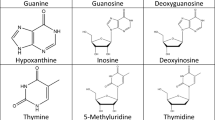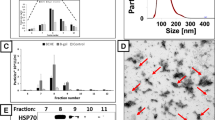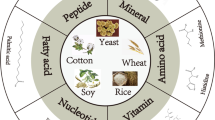Abstract
In this publication different detachment factors were tested for enhancing carrier to carrier transfer for scale-up of macroporous microcarrier based bioprocesses. Two Chinese hamster ovary cell lines, CHO-K1 and a genetically engineered CHO-K1 derived cell line (CHO-MPS), producing recombinant human Arylsulfatase B, were examined. The cells were grown on Cytoline 1microcarriers (Amersham Biosciences, Uppsala, Sweden) in protein-free and chemically defined medium respectively. Fully colonised microcarriers were used at passage ratios of approximately 1:10 for carrier to carrier transfer experiments. To accelerate the colonisation of the non-colonised, freshly added microcarriers the detachment reagents trypsin, papain, Accutase™ (PAA, Linz, Austria), heparin and dextransulphate were used. Both cell lines showed good results with trypsin, Accutase and dextransulphate (Amersham Biosciences, Uppsala, Sweden), while papain failed to enhance carrier to carrier transfer in comparison to the non-treated reference. The maximum growth rate of cells on microcarriers with 2% dextransulphate in the medium was 0.25 ± 0.02d−1 and 0.27 ± 0.03d−1 for the CHO-MPS and CHO-K1, respectively. TheCHO-K1 grew best after detachment with trypsin (μ = 0.36 ± 0.03d−1). This indicates, that one of the key parameters for carrier to carrier transfer is the uniform distribution of cells on the individual carriers during the initial phase. When this distribution can be improved, growth rate increases, resulting in a faster and more stable process.
Similar content being viewed by others
References
Amano H., Kurosaka R., Ema M. and Ogawa Y. 1996. Trypsin promotes C6 glioma cell proliferation in serum-and growth factor-free medium. Neurosci. Res. 25: 203-208.
Barabino G.A., Liu X.D., Ewenstein B.M. and Kaul D.K. 1999. Anionic polysaccharides inhibit adhesion of sickle erythrocytes to the vascular endothelium and result in improved hemodynamic behavior. Blood 93: 1422-1429.
Dee K.U., Shuler M.L. and Wood H.A. 1997. Inducing single-cell suspension of BTI-TN5BI-4 insect cells: I. The use of sulfated polyanions to prevent cell aggregation and enhance recombinant protein production. Biotechnol. Bioeng. 54: 191-205.
Dürrschmid M., Landauer K., Simic G., Klug H., Müller D., Keijzer T. et al. 2001. Comparison of Fluidised Bed and Ultrasonic Cell-Retention Systems for High Cell Density Mammalian Cell Culture. In: Lindner-Olsson E., Chatzissavidou N. and Liillau E. (eds), Animal Cell Technology: From Target to Market. Kluwer Academic Press, Dordrecht, NL, pp. 382-385.
Facius D. and Lohster R. 1999. Multiple-Product Isolation from Multicomplex Mixtures in a Single Operating Unit. Genetic Engineering News 19: 47-51.
Goldman M.H., James D.C., Rendall M., Ison A.P, Hoare M. and Bull A.T. 1998. Monitoring recombinant human interferongamma N-glycosylation during perfused fluidized-bed and stirred-tank batch culture of CHO cells. Biotechnol. Bioeng. 60: 596-607.
Hohenwarter O. 1990. Humane Endothelzellen: Primärkultur und Immortalisierung, University of Agricultural Sciences, Vienna, A.
Hu X., Xiao C., Huang Z., Guo Z., Zhang Z. and Li Z. 2000. Pilot production of u-PA with porous microcarrier cell culture. Cytotechnology 33: 13-19.
Jayme D.W. and Smith S.R. 2000. Media formulation options and manufacturing process controls to safeguard against introduction of animal origin contaminants in animal cell culture. Cytotechnology 33: 27-36.
Jozefowicz M. and Jozefonvicz J. 1997. Randomness and biospecificity: random copolymers are capable of biospecific molecular recognition in living systems. Biomaterials 18: 1633-1644.
Kong D., Cardak S., Chen M., Gentz R. and Zhang J. 1999a. High cell density and productivity culture of Chineses hamster ovary cells in a fluidized bed bioreactor. Cytotechnology 29: 215-220.
Kong D., Chen M., Gentz R. and Zhang J. 1999b. Cell growth and protein formation on various microcarriers. Cytotechnology 29: 149-156.
Logeart-Avramoglou D. and Jozefonvicz J. 1999. Carboxmethyl Benzylamide Sulfonate Dextrans (CMDBS), A Family of Biospecific Polymers Endowed with Numerous Biological Properties: A Rewiew. J. Biomed. Mater. Res. 48: 578-590.
Maiga-Revel O., Chaubet F. and Jozefonvicz J. 1997. New investigations on heparin-like derivatized dextrans: CMDBS, synergistic role of benzylamide and sulfate substituents in anticoagulant activity. Carbohydr. Polym. 32: 89-93.
Merten O.-W. 2000. Cell Detachment. In: Spier R.E. (ed.), Encyclopedia of Cell Technology. John Wiley & Sons, New York, USA, pp. 351-365.
Merten O.-W., Dante J., Noguiez-Hellin P., Laune S., Klatzmann D. and Saizmann J.-L. 1997. New process for cell detachment: use of heparine. In: Carrondo M.J.T., Griffiths B. and Moreira L.P. (eds), Animal Cell Technology. From vaccines to genetic medicine. Kluwer Academic Publishers, Dordrecht, NL, pp. 343-348.
Merten O.-W, Kierluff J.V., Castignolles N. and Perrin P. 1994. Evaluation of the new serum-free medium (MDSS2) for the production of different biologicals: Use of various cell lines. Cytotechnology 14: 47-59.
Ohlson S., Branscomb J. and Nilsson K. 1994. Bead-tobead transfer of Chinese hamster ovary cells using macroporous microcarriers. Cytotechnology 14: 67-80.
van der Velden-de Groot C.A.M. 1995. Micorcarrier technology, present status and perspective. Cytotechnology 18: 51-56.
Voigt A. and Zinti F. 1999. Hybridoma cell growth and antineuroblastoma monoclonal antibody production in spinner flasks using a protein-free medium with microcarriers. J. Biotechnol. 68: 213-226.
Xiao C., Huang Z., Li W, Hu X., Qu W, Gao L. et al. 1999. High density and scale-up cultivation of recombinant CHO cell line and hybridomas with porous microcarrier Cytopore. Cytotechnology 30:143-147.
Zanghi J.A., Renner W.A., Bailey J.E. and Fussenegger M. 2000. The Growth Factor Inhibitor Suramin Reduces Apoptosis and Cell Aggregation in Protein-Free CHO Cell Batch Cultures. Biotechnol. Prog. 16: 319-325.
Author information
Authors and Affiliations
Rights and permissions
About this article
Cite this article
Landauer, K., Dürrschmid, M., Klug, H. et al. Detachment factors for enhanced carrier to carrier transfer of CHO cell lines on macroporous microcarriers. Cytotechnology 39, 37–45 (2002). https://doi.org/10.1023/A:1022455525323
Issue Date:
DOI: https://doi.org/10.1023/A:1022455525323




